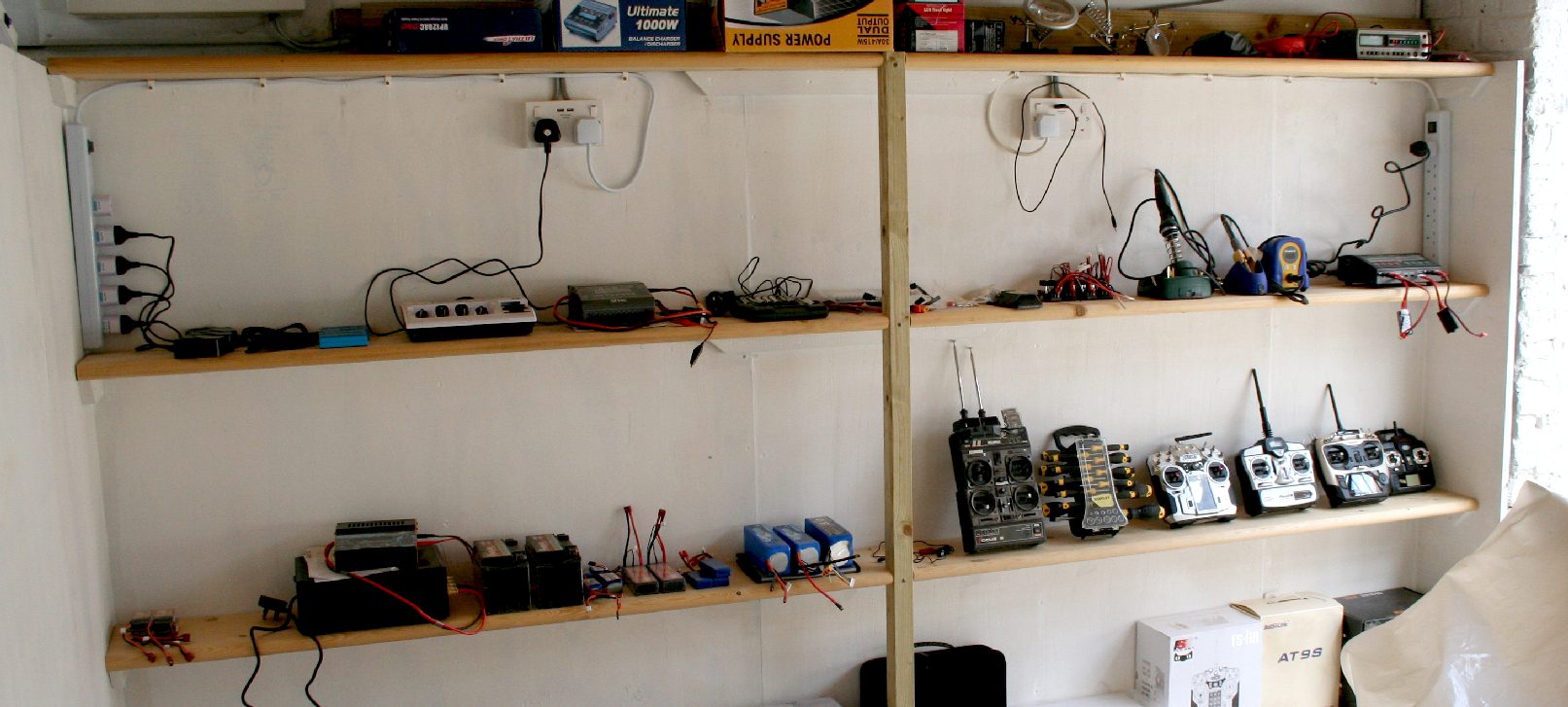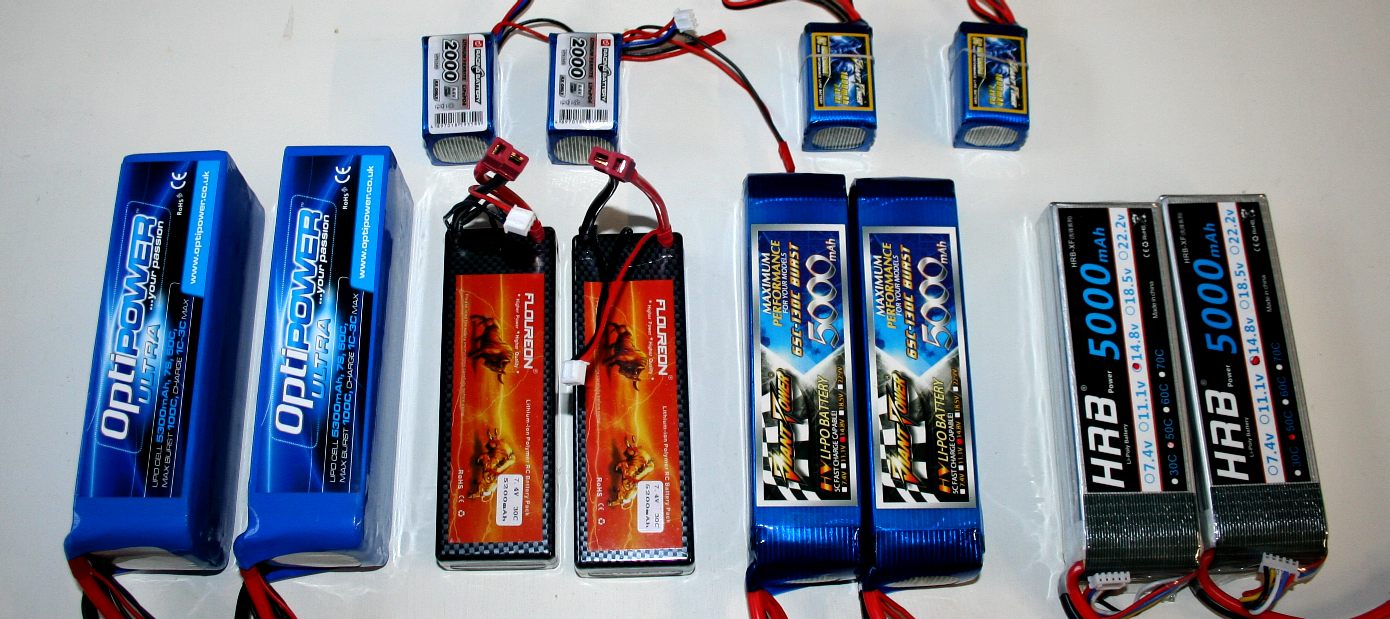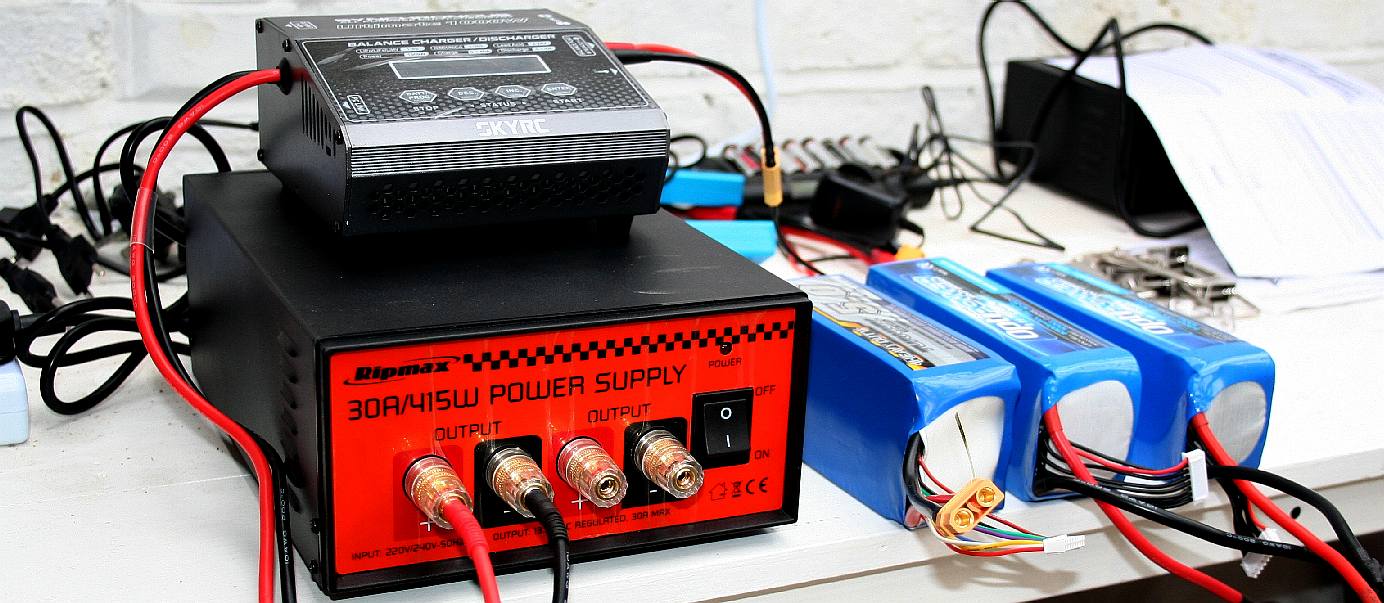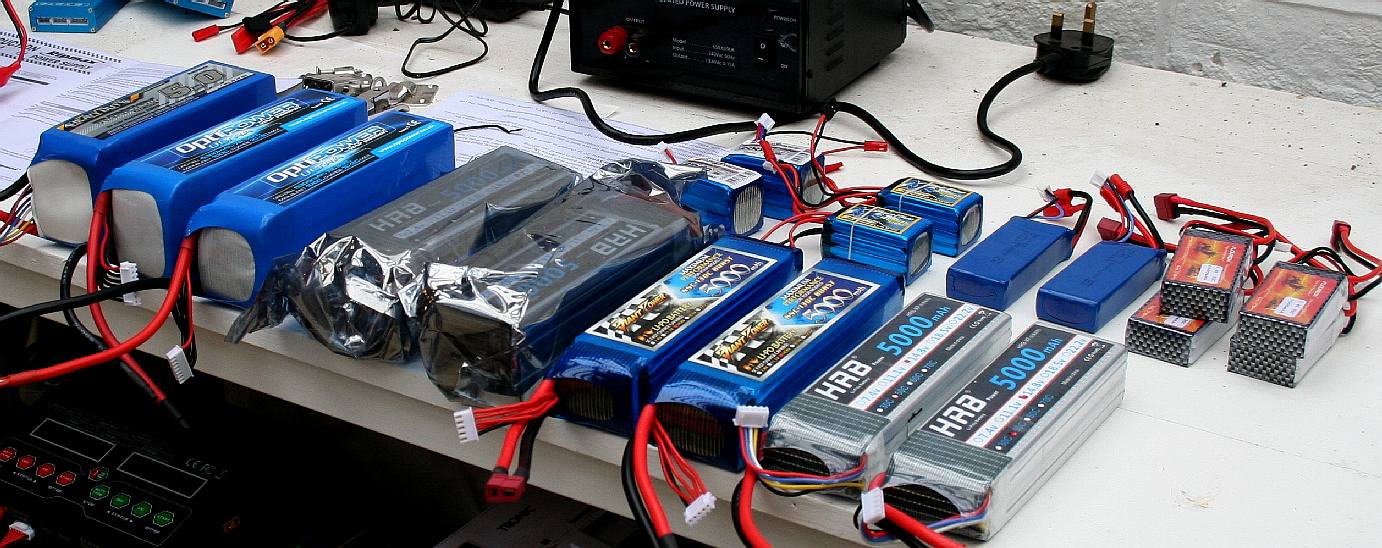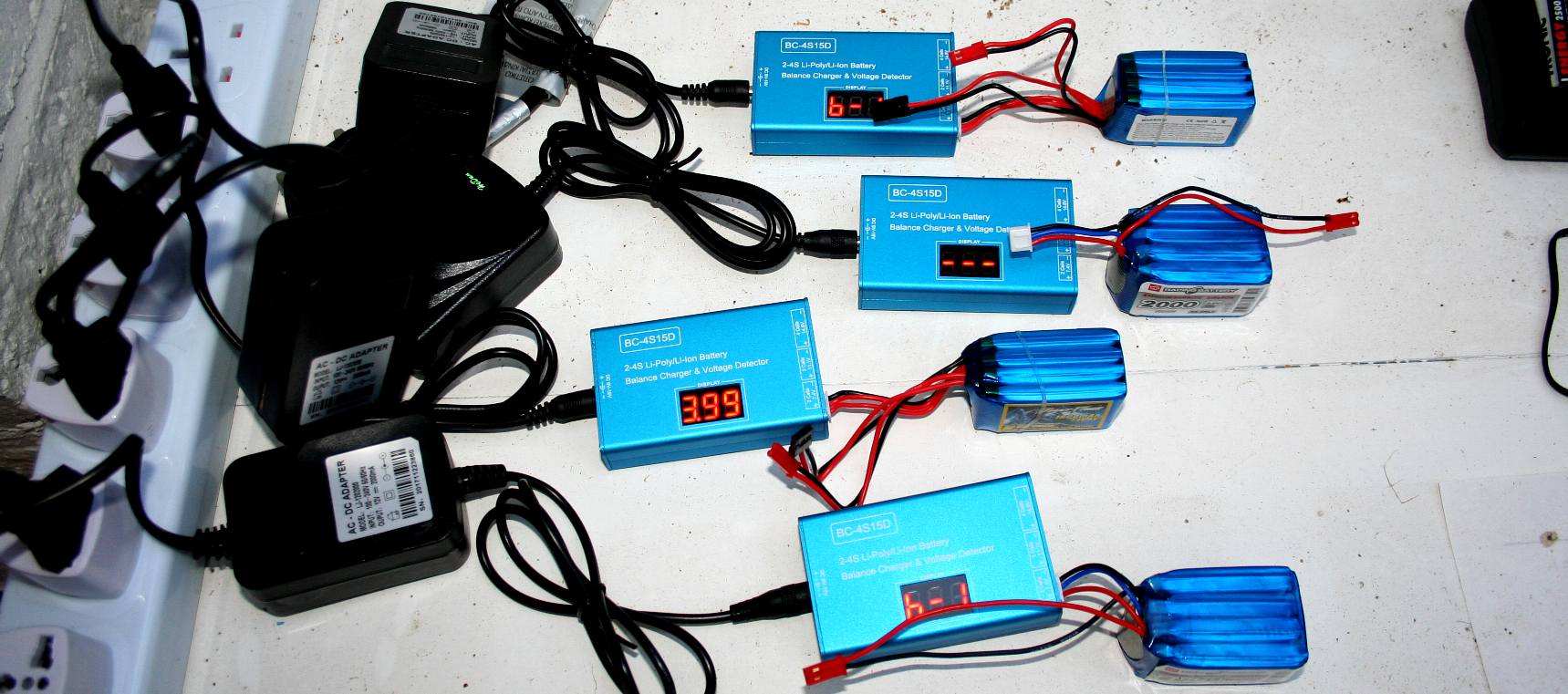|
LIPO BATTERY CHARGING
ABOUT - CONTACTS - FOUNDATION - HOME - A-Z INDEX
SHELVING - It has taken some time to reach this stage where the wall behind was damp and going green, hardly conducive to storage of electronic equipment. This was cured by laying a concrete gully on the ground above outside, coupled with tanking and a barrier of treated plywood. Copyright © photographs May 5 2018. All rights reserved. You will need the permission of the Cleaner Ocean Foundation to reproduce these diagrams except for educational use or private research.
ENSEMBLE - These are the batteries for our first batch of experiments in 2018. We only have one set of 25volt packs for the pumps. We have two sets of the 14.8 volt packs for the AmphiMax drives and two sets of packs for the servos. Hence, we need another set of the big boys. We are waiting for the delivery of some 30amp power supplies for the seven cell packs, where these are not commonplace and we had to charge from 12v car batteries - so messy when operating in a laboratory situation - fine when in the field. There are many manufacturers of 6S charging equipment with built in power supplies, meaning no problems at all for 2S and 4S packs. This lot will allow us around 30 minutes of run time while we develop the launch and recover sequences.
Consider the logistics of providing more or less continuous supplies of Lipo batteries for both Amphimax and Seavax vehicles, where both have to be operated together for the launch and recovery operation simulations, and we cannot afford much downtime while a test tank is operation and fully staffed.
It would be a lot simpler if these vehicles used the same voltages for their respective radio gear, motors, servos and pumps, but they don't. We need 7.4 volt packs for the radio receivers and servos, 14.8 volt packs for the drive motors and plastic shredding head, and 22.2 & 25.9 volt packs for the pumps.
That means quite a lot of chargers operating at different voltages and cycles - and that means a lot of desk space, unless we install shelving that is designed to take the charging units and battery packs - and is exactly what we are doing at the moment. We are gearing up for a series of test tank experiments for the summer of 2018.
At the same time as the lab is being upgraded for greater efficiency, we are also installing a lowering mechanism in the test tank, to be fitted with a gimbaled head.
LAB POWER SUPPLIES - Some chargers are for use in the lab only, while nobody produces a charger/balancer for 8S packs that run directly from a mains supply. The solution is to use the SKYRC 1000 watt running from a Ripmax 12 volt 30 amp regulated power supply. That is about the lowest input that the Ultimate unit will run from. Either that or you have to use 12v car batteries as the input power, but in a lab this is cumbersome and space consuming. In the field you have no choice but to use portable lead-acid batteries to power the SKYRC and other charging equipment.
BATTERY BANK - The number of Lipo packs grows with each new experiment. The more complex the testing schedule and the more elements, the greater the number of battery packs that have to be charged, discharged and balanced ready to the next day - and of course during the day. That means two set of packs for each function, so that while one set is being used in the Amphimax and Seavax vehicles, another set of batteries is being charged ready to be exchanged.
TEST CHARGING STATION - In January 2018 in the robot lab our technicians are working out the wiring and safety temperature monitoring to be able to charge 12 lithium batteries of different voltages and capacities all at the same time. This is so that AmphiMax and SeaVax experiments may be conducted in tandem, such as when simulating an ocean launch in the test tank. Here you can see a test charge of four small batteries that power servos and radio control gear. We use much larger packs of 14 (4s) and 24 volts (7s) and 5 amp/hour capacities to run the tracks on AmphiMax and the pumps on SeaVax. The temporary layout will be converted to a fixed arrangement once we are sure that we can charge our packs in good time to allow extended experimenting time. Copyright © photographs January 23 2018. All rights reserved. You will need the permission of the Cleaner Ocean Foundation to reproduce these diagrams except for educational use or private research.
LINKS & REFERENCE
https:
OCEAN CONDITIONER - This proof of concept scale model is due to undergo a series of punishing tests in our water tank in summer of 2018.
This website is provided on a free basis as a public information service. Copyright © Cleaner Oceans Foundation Ltd (COFL) (Company No: 4674774) 2018. Solar Studios, BN271RF, United Kingdom. COFL is a charity without share capital. The names Amphimax™ RiverVax™ and SeaVax™ are trademarks.
|
